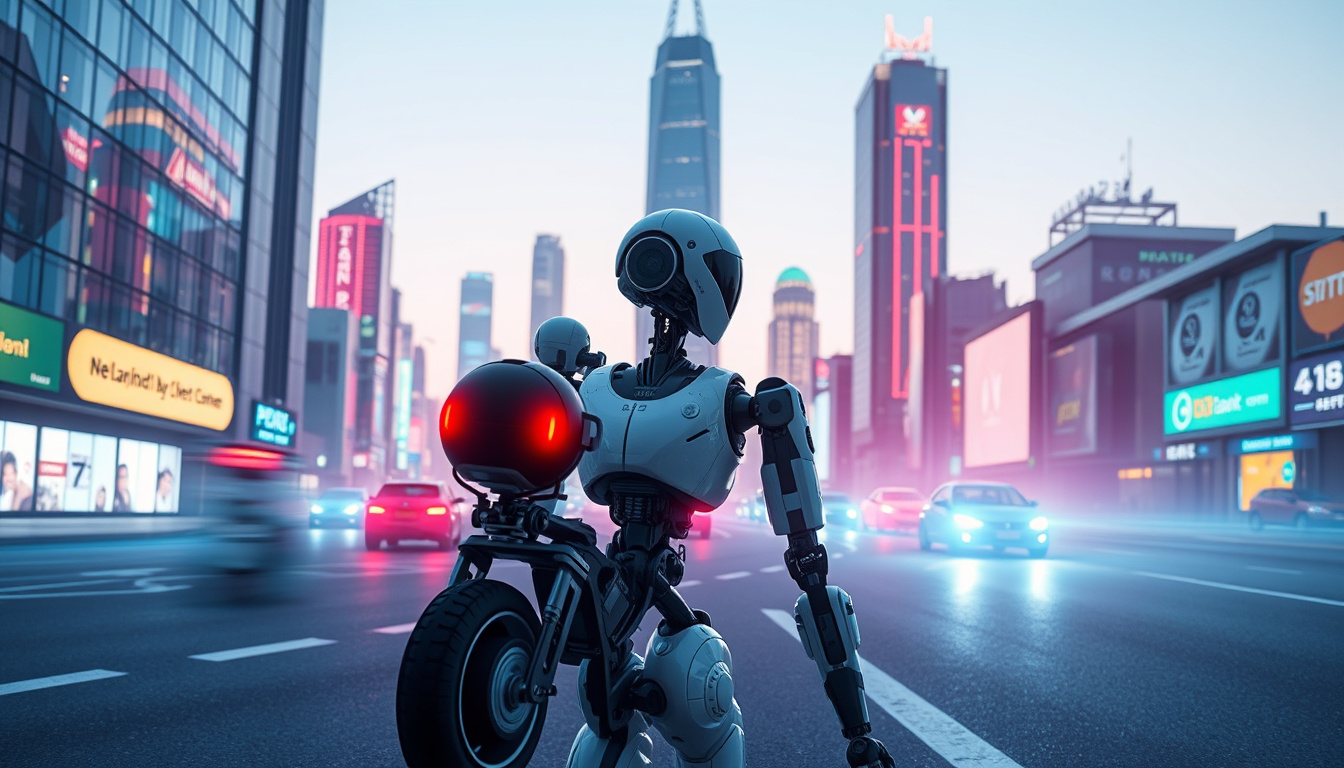In today’s rapidly evolving technological landscape, autonomous intelligent systems are playing a pivotal role in shaping the future. These systems combine advanced artificial intelligence (AI) and automation to perform complex tasks without human intervention, offering unprecedented efficiency and innovation. From self-driving cars to smart manufacturing, autonomous intelligent systems are revolutionizing modern technology by enhancing accuracy, reducing operational costs, and enabling new capabilities previously thought impossible.
Understanding Autonomous Intelligent Systems
At their core, autonomous intelligent systems are integrated solutions that leverage sensors, machine learning, and decision-making algorithms to operate independently. Unlike traditional automated systems that require predefined instructions, these systems adapt to changing environments and inputs, making decisions based on real-time data.
Key Characteristics of Autonomous Intelligent Systems
- Self-learning: They improve performance by analyzing outcomes and acquiring new information.
- Adaptability: Ability to adjust actions based on dynamic conditions and unforeseen events.
- Decision-making: Utilize AI techniques like neural networks and deep learning to make complex choices.
- Interconnectivity: Often connected to the Internet of Things (IoT), sharing information across devices for coordinated actions.
Applications Transforming Industries
The impact of autonomous intelligent systems extends across various sectors. Here are some notable applications where their influence is most significant:
1. Autonomous Vehicles
One of the most visible examples is in self-driving cars. Autonomous intelligent systems process massive sensor data — including cameras, LIDAR, and radar — to navigate safely and efficiently without human assistance. Companies like Tesla, Waymo, and Uber continue to develop these technologies to improve safety and reduce traffic congestion.
2. Smart Manufacturing and Robotics
Manufacturing plants increasingly implement autonomous robots that can handle tasks such as assembly, inspection, and maintenance. These systems optimize production lines, reduce human error, and enable 24/7 operations, leading to higher productivity and lower costs.
3. Healthcare and Medical Devices
Autonomous intelligent systems assist in diagnostics, personalized treatment planning, and robotic surgeries. AI-enabled machines can analyze medical images or monitor patient vitals continuously, enhancing accuracy and early detection of diseases.
4. Agriculture and Environmental Monitoring
Drones and autonomous machinery equipped with intelligent systems monitor crop health, soil conditions, and irrigation needs. This technology supports sustainable farming practices by maximizing resource efficiency and minimizing environmental impact.
5. Smart Cities and Infrastructure Management
Urban planners deploy autonomous systems to manage traffic lights, energy consumption, and waste management. By analyzing real-time data, these systems improve public safety, reduce energy waste, and enhance the quality of urban living.

Benefits Driving Widespread Adoption
The rapid adoption of autonomous intelligent systems stems from the multiple benefits they offer:
- Increased Efficiency: Continuous operation without human fatigue boosts overall productivity.
- Cost Reduction: Automation lowers labor costs and decreases mistakes that lead to waste.
- Enhanced Safety: Reducing human involvement in hazardous environments decreases injury risks.
- Improved Decision Accuracy: Data-driven insights minimize errors that arise from human judgment.
- Scalability: Easily adaptable to new tasks and environments as business needs evolve.
Challenges and Considerations
Despite their advantages, implementing autonomous intelligent systems involves addressing key challenges:
- Data Privacy and Security: Autonomous systems often handle sensitive data, raising concerns about cyber threats.
- Ethical Implications: Decision-making algorithms must align with ethical standards, especially in critical applications like healthcare and autonomous vehicles.
- Integration Complexity: Retrofitting existing infrastructure to support these systems can be costly and technically demanding.
- Regulatory Frameworks: Governing bodies must establish guidelines to ensure safety, accountability, and compliance.
Understanding and overcoming these hurdles is imperative for the sustainable advancement of autonomous technologies.
How to Implement Autonomous Intelligent Systems in Your Business
For companies looking to integrate autonomous intelligent systems, a strategic approach is essential. Below is a step-by-step process to guide implementation:
- Assessment and Goal Setting: Identify processes that benefit most from automation and define clear objectives.
- Feasibility Study: Analyze technical, financial, and operational feasibilities.
- Selecting the Right Technology: Choose autonomous systems tailored to organizational needs and scalability.
- Pilot Testing: Roll out controlled trials to evaluate performance in real-world scenarios.
- Full Deployment: Gradually integrate the system across operations with ongoing monitoring.
- Continuous Improvement: Leverage system feedback for upgrades and optimization.
Engaging with experienced technology partners and consulting industry best practices can significantly increase chances of success.
Future Trends in Autonomous Intelligent Systems
Technology experts predict several exciting trends that will define the evolution of autonomous intelligent systems:
- Edge AI: More processing will be done locally on devices, reducing latency and dependency on cloud connectivity.
- Explainable AI: Systems will become better at clarifying their decision processes, enhancing transparency.
- Collaborative Robots (Cobots): Increased interaction and cooperation between humans and robots in workplaces.
- Expanded IoT Ecosystems: Integration with a wider range of devices and sensors for more holistic autonomous solutions.
According to a report by McKinsey & Company, autonomous systems are expected to contribute trillions of dollars to the global economy by 2030, making understanding and leveraging these technologies imperative (source).
FAQ About Autonomous Intelligent Systems
Q1: What are the main differences between autonomous intelligent systems and traditional automated systems?
A1: Autonomous intelligent systems use AI to make decisions and adapt to new information, whereas traditional automated systems operate based on static, pre-set instructions.
Q2: How do autonomous intelligent systems improve safety in various industries?
A2: By removing or limiting human exposure to hazardous environments and by making precise, data-driven decisions, autonomous systems significantly reduce risks and accidents.
Q3: Can small businesses benefit from autonomous intelligent systems, or are they only for large corporations?
A3: Small businesses can also benefit, especially with scalable and modular autonomous solutions that can be customized to fit smaller operations and budgets.
Conclusion: Embrace the Autonomous Revolution
Autonomous intelligent systems are undeniably revolutionizing modern technology by enabling smarter, faster, and safer operations across countless industries. As these systems continue to advance, businesses and individuals who understand and adopt these innovations will gain a clear competitive edge. Whether improving manufacturing efficiency, transforming transportation, or enhancing healthcare outcomes, the potential is vast and growing.
If you want to stay ahead in this rapidly changing era, now is the time to explore how autonomous intelligent systems can be tailored to meet your specific needs. Don’t let your organization fall behind—invest in the future, embrace autonomy, and unlock the transformative power of intelligent systems today.




